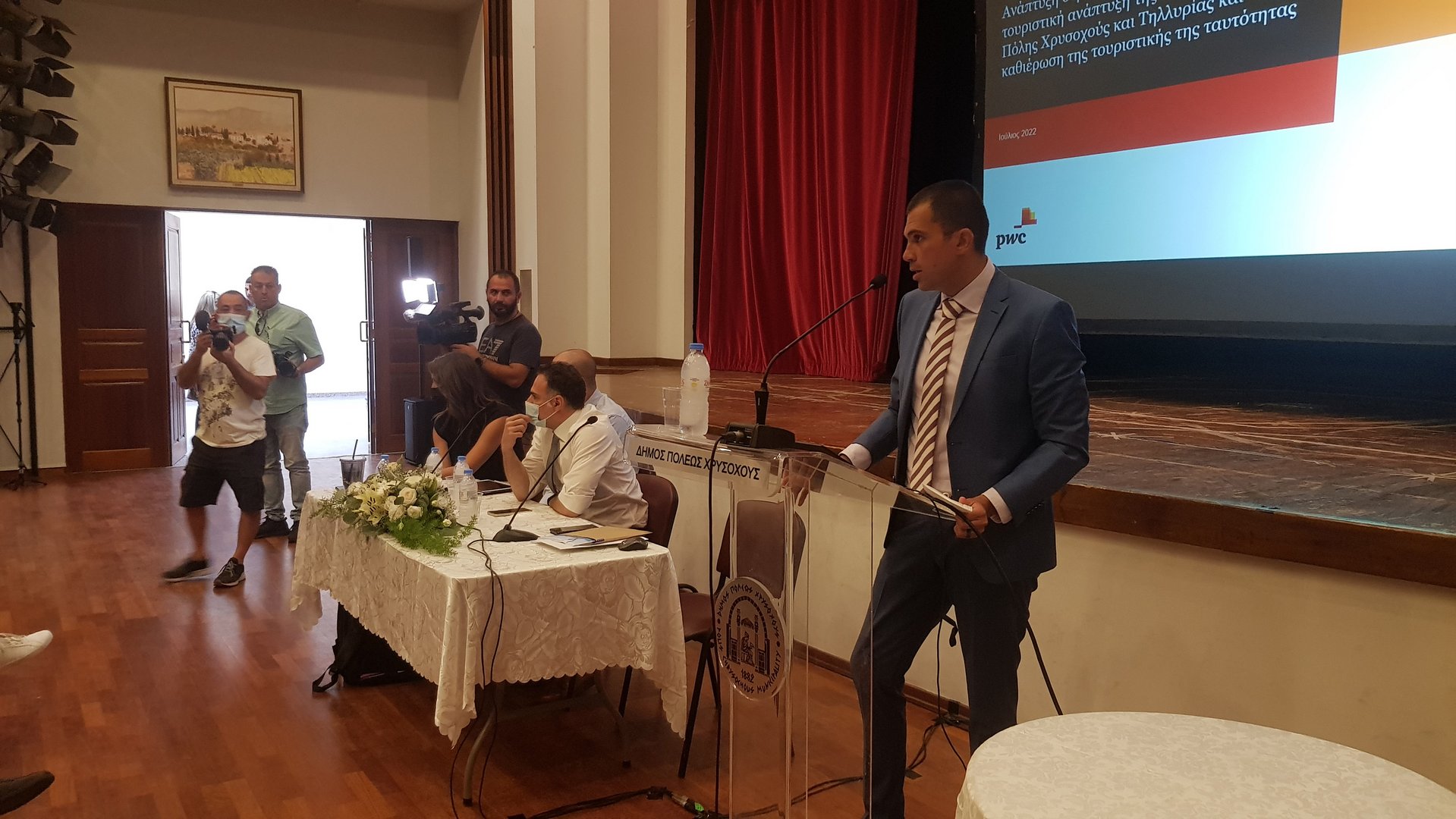The goal of the deputy ministry of tourism is to generate sustainable development for tourism in Pyrgos Tyllirias and Polis Chrysochous, deputy tourism minister Savvas Perdios said on Tuesday.
“All of us who are familiar with the area recognise its advantages in terms of natural environment and that it can attract many special forms of tourism,” he said, speaking after a presentation of a study on development strategies for tourism in the wider area, prepared by PricewaterhouseCoopers.
The researchers explained that the purpose of the project is the development of a strategy for the sustainable tourism development of the wider area of Polis Chrysochous and Tylliria and the establishment of a tourist identity for the wider region.
In the presentation they said that the area under study covers 37 communities from the districts of Paphos and Nicosia.
The vision for the project is the development of a sustainable tourist identity which includes the establishment of the area as an authentic, all-season, high-quality, digitally intelligent and socially beneficial destination.
In addition to their varied and unique natural beauty which lends itself to many different interests, the areas are linked to numerous myths and legends, providing interesting narratives that connect to reference points within the destination.
In relation to the infrastructure, the researchers said the aim is to improve the aesthetic appearance of the area, to make the local environment more welcoming, safe and interesting, so that visitors feel welcome and are encouraged to spend more time in the destination but also to visit it again.
Another objective is to improve the transport network and the accessibility of tourism for both locals and visitors, but also to implement sustainable waste management infrastructure and best environmental practices, as well as to improve the digitization of tourism.
The study also focused on improving existing hotel businesses, increasing the number of beds offered, and in incentivising the local population to remain in the destination and attracting new permanent residents.
Branding and promotion of the region was also highlighted, saying that recent travel trends show that tourists are now looking for two key elements when they travel; sustainable practices and authentic experiences.
Finally, the researchers referred to similar destinations such as Western Greece, Tuscany in Italy, Thessaly, the Cote d’Azur in France, the Algarve in Portugal and the Cinque Terre in Italy, which benefited from similar projects.
Having seen the results of the study, Perdios expressed his satisfaction about the fact it was consistent with his ministry’s work, particularly the 15 subsidy plans it has developed in the past four months.
“For the first time, the sustainable touristic development of Polis and Tylliria will be integrated into the National Tourism Strategy, as was intended,” he said, adding that most several of the actions will be integrated in the medium-term plan and the rest in the five-year period 2020-2026 and until 2030.
Polis Chrysochous mayor Yotis Papachristofis, welcomed this development, saying he hopes to see why the two regions had been left behind in terms of tourism, and how they can develop into viable tourist areas.
For his part, Kato Pyrgos community leader Nicos Kleanthous said that both Polis and Pyrgos are “the hidden gems of Cyprus,” with a bright future in terms of tourism.







Click here to change your cookie preferences